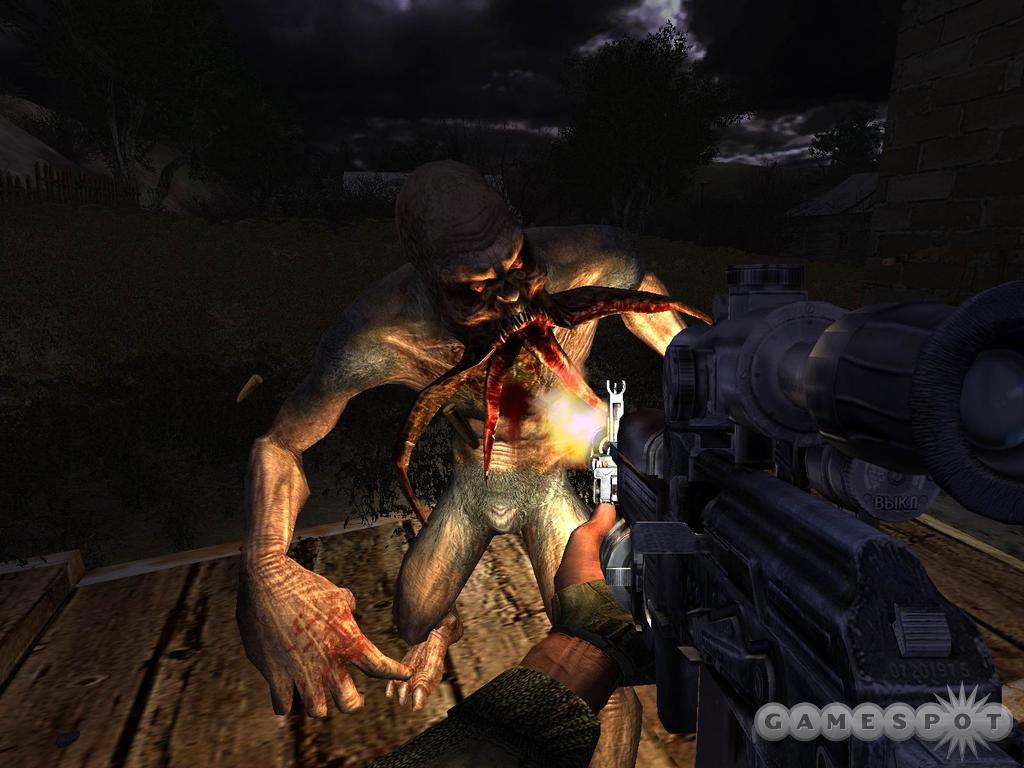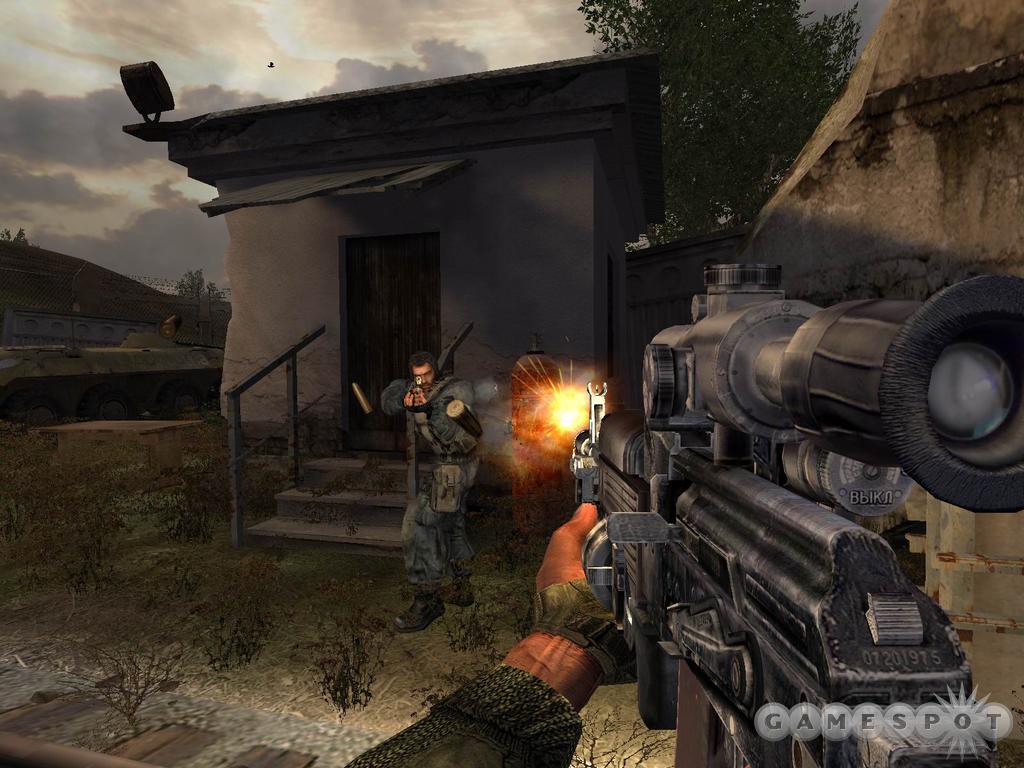S.T.A.L.K.E.R.: Shadow of Chernobyl Designer Diary #5
GSC Game World's Andrew Prohorov discusses the combat system in this ambitious action game.
S.T.A.L.K.E.R.: Shadow of Chernobyl will be an unusual "survival action" game, in which you'll play as a scavenger hunting for valuable, irradiated objects at ground zero. The game will take place in a near-future version of Chernobyl, the site of the tragic 1986 reactor meltdown, in the wake of a second, fictitious meltdown in the year 2012. S.T.A.L.K.E.R. has already gained a lot of attention for its highly impressive graphics, which are based on numerous photos captured at the scene by Ukraine-based developer GSC Game World. However, the game will also present the intriguing challenge of forcing you to survive in this hostile environment--you start off with very poor equipment and limited supplies, yet you'll be pitted against rival scavengers who seek to recover the same items you're after. The nuclear meltdown has also given rise to a great many dangerous mutant creatures that you'll have to contend with. Lead designer Andrew Prohorov discusses the game's combat system in our latest designer diary.
Lead Designer, GSC Game World

At its core, S.T.A.L.K.E.R. is a game of survival. And what could be more integral to surviving than combat? The way in which combat takes place, the rules that govern encounters, and the laws that define the scope of every confrontation must be fully supportive of our goal to simulate a living, breathing world.
Every living entity in the game has the potential for hostility, gaining combat experience with each encounter. Yet unlike in many games, confrontation can take place without the involvement of the players--a feature that makes for a living, developing world.
One of our key ideas was to imagine monsters and humans as flawed creations. Giving them perfect hearing and vision would make for limited and predictable gameplay. The more interesting approach was in limiting them--in creating characters whose approach to battle would be as individual as that of the players. Some characters will have difficulty seeing in the dark, and there are reaction times to be considered--especially the reactions associated with subtle sounds such as the cracking of a twig. Characters hearing a sound like this, or spying a movement in the undergrowth, will approach the source in a cautious manner, also keeping in mind how the landscape and lighting will affect their chances in combat. These creatures are not stupid. In potentially hazardous situations, they will retreat if the odds aren't in their favor.
It is this ability to adapt that makes the combat system within S.T.A.L.K.E.R. so deep. There are no set patterns, no fixed ways in which any given character will respond. Circumstances, abilities, and opportunity--all of these things shape the way that a confrontation unfolds. An opponent can outflank the enemy, lay ambushes, and even run from hopeless situations. In other words, computer-controlled characters will behave exactly like their human counterparts. It's an exciting world to play in, as different characters' actual strength, perceived strength, actual advantages, and perceived advantages play a vital role. Even potentially cowardly characters might press forward if they sense a weakness in you. Interestingly, characters are also able to maintain their distance from an attacker so as to lessen potential damage. The whole system will quickly teach players valuable lessons in estimating the opposition, as computer-controlled characters are constantly evaluating their opponents' physical prowess along with levels of morale during an encounter.
We were not content with establishing a huge network of potential behavioral modifiers, either. S.T.A.L.K.E.R. also contains a wide variety of opponents. The most dangerous of these will of course be the hostile rival stalkers. Meeting one of these enemies becomes a clash of intellect and ability, as they should prove more than capable of using the weapons you have probably been using on lesser creatures. Other stalkers will be programmed with humanlike attributes, just like you. They will possess courage, generosity, cowardice, hate, love, and so on. They can be friendly, neutral, or aggressive, and they will seek to exploit their own position in every situation. Whereas with mutated animals you have to consider their natural (or unnatural) levels of cunning, with other stalkers, you will quickly learn that you will have to start considering them as people in their own right.
Coordinated by interests and outlooks, stalkers unite into groupings within the zone. Several different clans exist, each with its own ideology and goals. Depending on what actions players take, these clans may offer membership. By joining, a member will be expected to work toward the clan's goals and participate in conflicts as required. There are subtle customs best learned if one is to survive within this world--especially since stalkers don't like being double-crossed.

In the hands of stalkers, the issue of game weaponry becomes more urgent. Rather than weapons being something for the player to collect out of curiosity or preference, the way in which we create these weapons leads them to have a very real purpose. There will be about 40 types of weapons in the game, covering all manner of combat types, from long range to close quarters. Given that the game is set in the Ukraine, these weapons will be primarily ex-USSR in design and origin. In addition, there will be next-generation weapons of Western design.
Each weapon will have its own properties and details, including firing patterns, piercing ability against different surfaces, shock waves, fragmentation, and directional explosions. These are just a few of the complexities that need to be taken into account. Weapons can even misfire, which raises the importance of technical service throughout the game.
Of course, while the range of weapons, and the level at which stalkers can use them, offers enormous gameplay possibilities, there are many other ways to hurt or be hurt within the game. Even a dog walking down the street could jump up and bite or claw you. Applying abnormal abilities to these peripheral creatures adds yet another element of danger to the zone and reduces the opportunity for players to ever feel safe--which will make survival that much more challenging in the final game.
Got a news tip or want to contact us directly? Email news@gamespot.com
Join the conversation